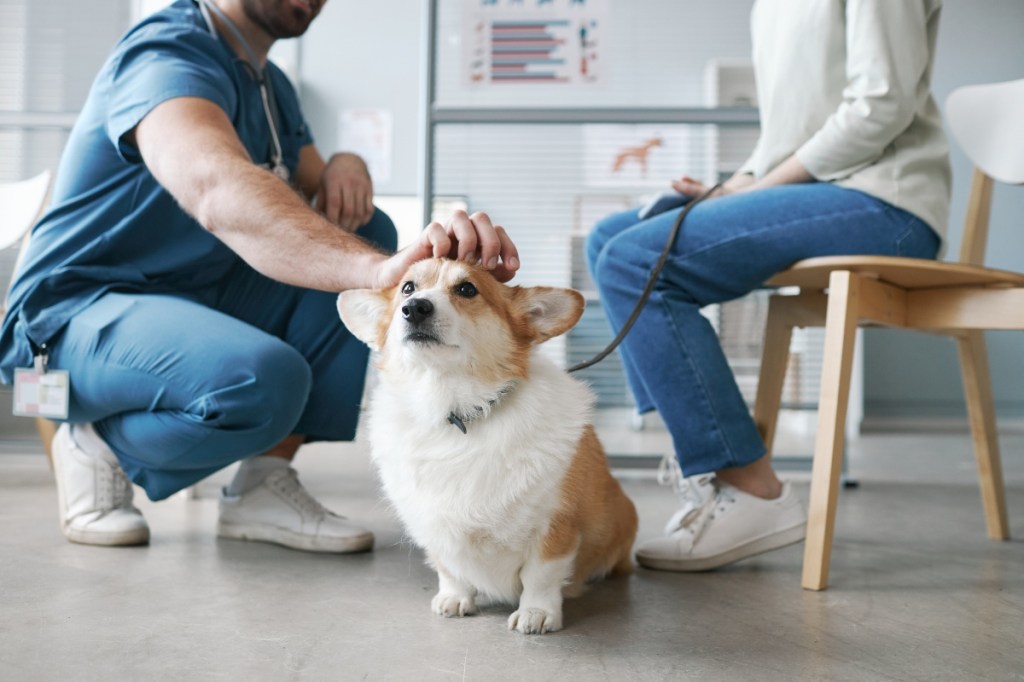Table of Contents
September is National Service Dog Month. Let’s take a moment to not only appreciate these very special animals, but to familiarize yourself with service dog challenges, etiquette and more.
What is a Service Dog?
According to service dog education group Please Don’t Pet Me, “Differentiating between service dogs, therapy dogs and emotional support animals is not a matter of splitting hairs or political correctness. Each of these dogs has a very different job from the others and the terms are not interchangeable.” Many service dogs take on different tasks from a legally recognized service dog to an emotional support animal, however there is a distinct difference: Service dogs assist people with challenges such as hearing or visual impairment, autism, seizures and epilepsy, diabetes, and more. They can be trained to perform an array of tasks including leading their human across busy streets, retrieving objects, opening and closing doors and even getting help. They usually wear a service dog vest, but not always!
You can find out more about the differences between emotional support dogs and service dogs in our article, “Difference Between Service Dogs & Emotional Support Animals.”
Maybe You Already Knew It…
- Service dogs help many different types of people
Each disability requires a unique kind of service dog; the blind have very different assistance needs than those with epilepsy, or those with emotional needs, and so on. Mobility assistance dogs are used by those with mobility restrictions or in wheelchairs; diabetic alert dogs are trained to recognize low insulin levels just through their sense of smell. Certain types of service dogs work with those who have autism and PTSD to help reduce anxiety, depression and improve social development. The health benefits of dogs are pretty amazing! - They’re not always dogs
“Service animals are defined as dogs that are individually trained to do work or perform tasks for people with disabilities,” says the Americans with Disabilities Actof 1990, and since then, this definition has opened up to include miniature horses. “Service animals are working animals, not pets. The work or task a dog has been trained to provide must be directly related to the person’s disability.” - The training is intense and expensive
A service animal must have specific training that fits its handler’s disability. Everything from medical alerts to coping mechanisms are trained, and many handlers will train their own service animals. Many volunteers start training the dogs as puppies and place them in volunteer homes to socialize and acclimate the pups to sights, sounds, smells and distractions. The pup is then professionally trained in obedience, retrieval, and handling. The cost for training a service dog can run anywhere from $15,000 to $50,000. It can be deducted from taxes, and there are a few other ways to defray costs. - The service dog vest
Guess what – it’s a myth that a service dog is required to wear a vest or other identifying garb! While many handlers have their dogs wear vests in order to keep the public from petting and to enter businesses without a hassle, it is not required. - Best Piece of Advice: Ignore a Service Dog
If you see a service dog, whether they are wearing vests, backpacks or harnesses, or you spot a working dog, simply ignore the dog. Do not whistle, pet, or interact with a dog on the job. And if you don’t know if the dog is in service, err on the side of caution and simply move along. It can be a dangerous distraction for service dogs and their humans.
Get Local
Want to donate or volunteer? Look for a local organization that needs help – they could have an Amazon Smile account or even an Amazon wish list, or perhaps they need dedicated families to help raise some pups. One of our favorites is the Assistance Dog Club of Puget Sound, whose mission is to “provide a safe, supportive, educational environment that will enhance the partnership of persons with disabilities and their assistance dogs.” The club provides a monthly newsletter that not only teaches the community about service dog and special needs issues, but also holds meetings and is a resource for those with service dogs.








